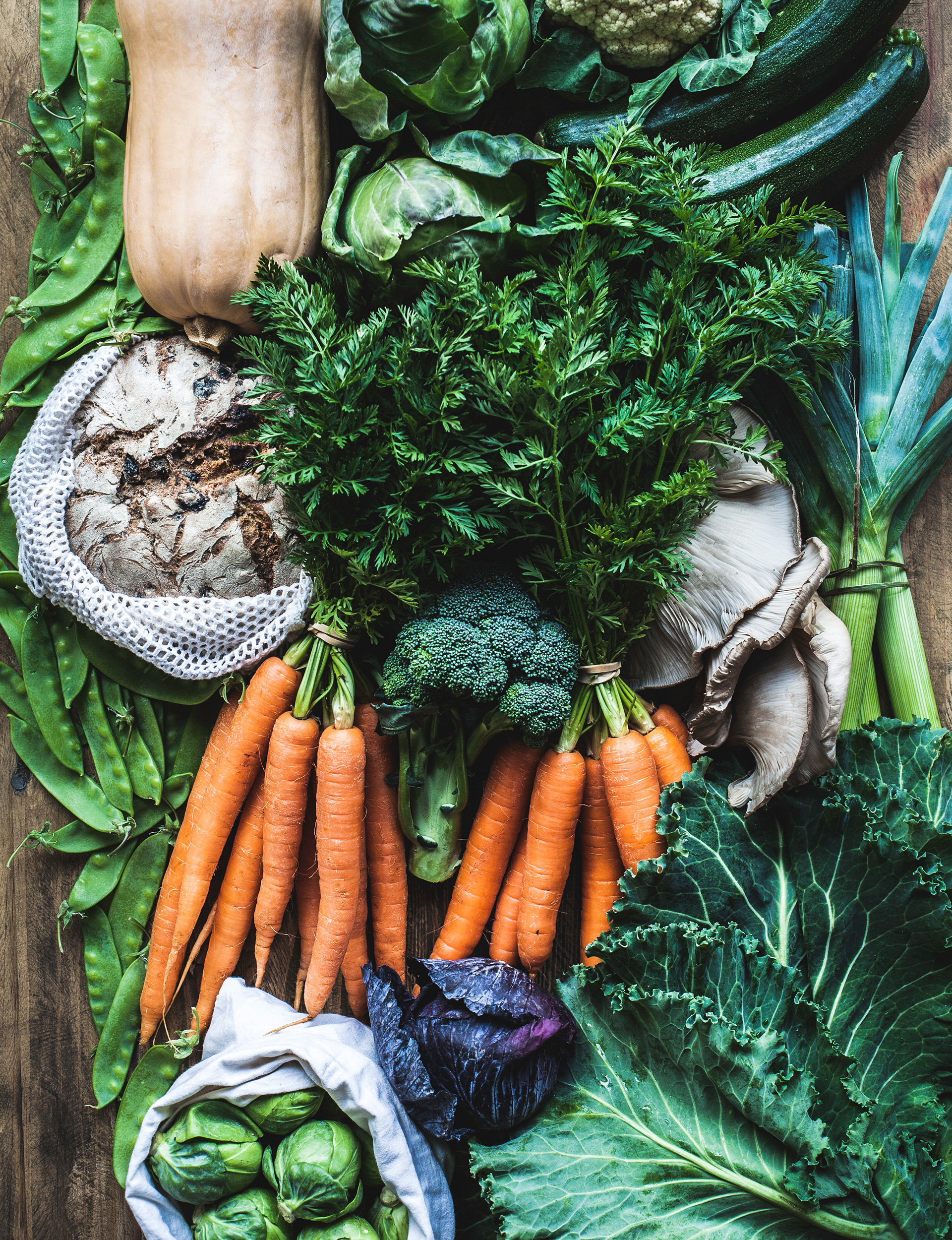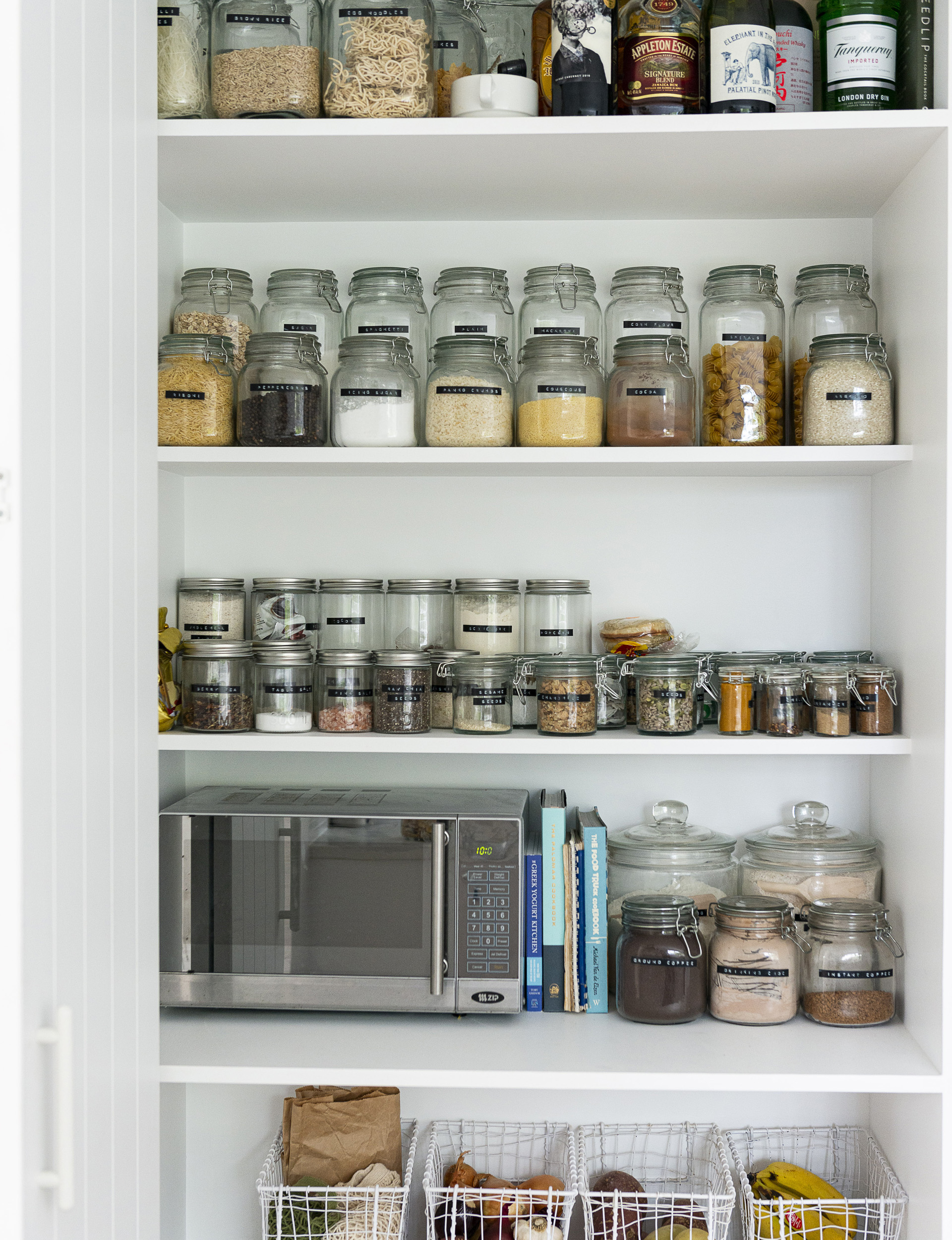Buying and storing food can generate a lot of unnecessary waste. Eleanor Ozich shares how to minimise waste and keep your fridge looking good

Not so long ago, creating a waste-free fridge might have seemed a daunting task. But more recently eco-friendly living and beautiful design trends have collided, giving us all kinds of lovely options for storing food sustainably.
Over the past few years, I’ve gradually switched out plastic storage options for good-quality alternatives, and, as it turns out, many of them actually keep food fresher for longer and inspire a healthier way of eating. Here are a few tips on how to buy and store food in a sustainable way.
1. Go for glass
Use sealable glass containers and jars. Glass is a safer storage option for your food than plastic, lasts much longer (with luck, for a lifetime) and looks so much prettier, too. Once I’ve done my shop, I’ll often pre-chop and prepare fresh produce and store it separately in glass containers to make life easier during the week. NB: It’s best to wash your produce before you use it, not before you store it, as the extra moisture can lead to fruit and veges spoiling earlier than usual.
2. Get it covered
Linen bowl covers (available on Etsy and at various eco stores) are a great investment. These washable covers with elasticated edges last for ages and are fantastic for placing over a bowl or jar instead of using plastic wrap. I also love beeswax food wraps for their versatility. Simply use the warmth of your hands to mould the beeswax around the top of a bowl, dish or jar. I find they’re ideal for wrapping something that needs to be airtight like a block of cheese, or odd shapes like half an avocado.

3. Off to market
Be mindful of where you shop. One of the simplest ways to go waste-free when it comes to fresh ingredients is to look for locally grown seasonal produce. We usually head to a local farmers’ market or order an organic vegetable box online to reduce the amount of plastic-wrapped produce coming into the house. Individual cotton produce bags can also be an earth-friendly companion when you head to the grocery store, and then can be easily transferred to the crisper compartment in your fridge.
4. Take it away
Try taking your glass containers along to your local butcher, fishmonger or takeaway shop. You’ll find that most places are happy to put the food you buy into your own container. We even do this for sushi.
5. Freeze with ease
Become friends with your freezer. Instead of tossing out food that’s almost past its prime, consider whether it could be frozen in ice-cube trays and then popped out into a larger container to have on hand for quick use. A few leftover ingredients I like to freeze are tomato purée, stock, grated fresh ginger or turmeric, finely chopped herbs (freeze these in butter and use for adding to dishes such as risotto) and even coconut cream and yoghurt. You can also freeze whole wedges of peeled citrus, fruit and chopped greens, which come in handy for throwing into smoothies.
eleanorozich.com | @eleanorozich
Words by: Eleanor Ozich. Photography by: Getty Images, Helen Bankers.
This article was first published in Your Home and Garden. Follow YHG on Instagram, Facebook and sign up to the fortnightly email for inspiration between the issues.
EXPERT PROJECTS

Create the home of your dreams with Shop Your Home and Garden
SHOP NOW











